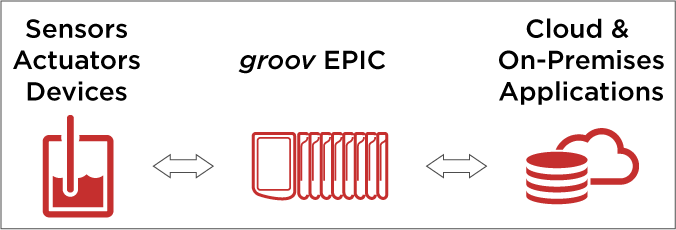Fog Computing vs. Edge Computing
What's the difference in the internet of things (IoT)?
The fundamental objective of the internet of things (IoT) is to obtain and analyze data from assets that were previously disconnected from most data processing tools.
This data is generated by physical assets or things deployed at the very edge of the network—such as motors, light bulbs, generators, pumps, and relays—that perform specific tasks to support a business process. The internet of things is about connecting these unconnected devices (things) and sending their data to the cloud or Internet to be analyzed.
In traditional IoT cloud architecture, all data from physical assets or things is transported to the cloud for storage and advanced analysis. Once in the cloud, the data is used for cognitive prognostics (that is, predictive maintenance, forensic failure analysis, and process optimization).
Fog and edge computing in manufacturing and automation applications are network and system architectures that attempt to collect, analyze, and process data from these assets more efficiently than traditional cloud architecture. These architectures share similar objectives:
- To reduce the amount of data sent to the cloud
- To decrease network and internet latency
- To improve system response time in remote mission-critical applications
However, there is a key difference between the two concepts. Both fog computing and edge computing involve pushing intelligence and processing capabilities down closer to where the data originates—at the network edge. The key difference between the two architectures is exactly where that intelligence and computing power is placed.
- Fog computing pushes intelligence down to the local area network (LAN) level of network architecture, processing data in a fog node or IoT gateway.
- Edge computing pushes the intelligence, processing power, and communication capabilities of an edge gateway or appliance directly into devices like PLCs (programmable logic controllers), PACs (programmable automation controllers), and especially EPICs (edge programmable industrial controllers).
In both architectures data is generated from the same source—physical assets such as pumps, motors, relays, sensors, and so on. These devices perform a task in the physical world such as pumping water, switching electrical circuits, or sensing the world around them. These are the “things” that make up the internet of things.
Fog computing
In fog computing, transporting data from things to the cloud requires many steps.
- First the electrical signals from things are traditionally wired to the I/O points of an automation controller (PLC or PAC). The automation controller executes a control system program to automate the things.
- Next the data from the control system program is sent to an OPC server or protocol gateway, which converts the data into a protocol Internet systems understand, such as MQTT or HTTP.
- Then the data is sent to another system, such as a fog node or IoT gateway on the LAN, which collects the data and performs higher-level processing and analysis. This system filters, analyzes, processes, and may even store the data for transmission to the cloud or WAN at a later date.
So fog computing involves many layers of complexity and data conversion. Its architecture relies on many links in a communication chain to move data from the physical world of our assets into the digital world of information technology. In a fog computing architecture, each link in the communication chain is a potential point of failure.
Edge computing
Edge computing simplifies this communication chain and reduces potential points of failure.
In edge computing, physical assets like pumps, motors, and generators are again physically wired into a control system, but this system is controlled by an edge programmable industrial controller, or EPIC. The EPIC automates the physical assets by executing an onboard control system program, just like a PLC or PAC. But the EPIC has edge computing capabilities that allow it to also collect, analyze, and process data from the physical assets it's connected to—at the same time it's running the control system program.
EPICs then use edge computing capabilities to determine what data should be stored locally or sent to the cloud for further analysis. In edge computing, intelligence is literally pushed to the network edge, where our physical assets or things are first connected together and where IoT data originates.
Edge computing saves time and money by streamlining IoT communication, reducing system and network architecture complexity, and decreasing the number of potential failure points in an IoT application. Reducing system architecture complexity is key to the success of IIoT applications. Read more in the Edge Computing Primer.



